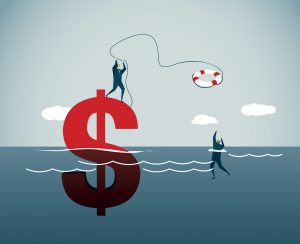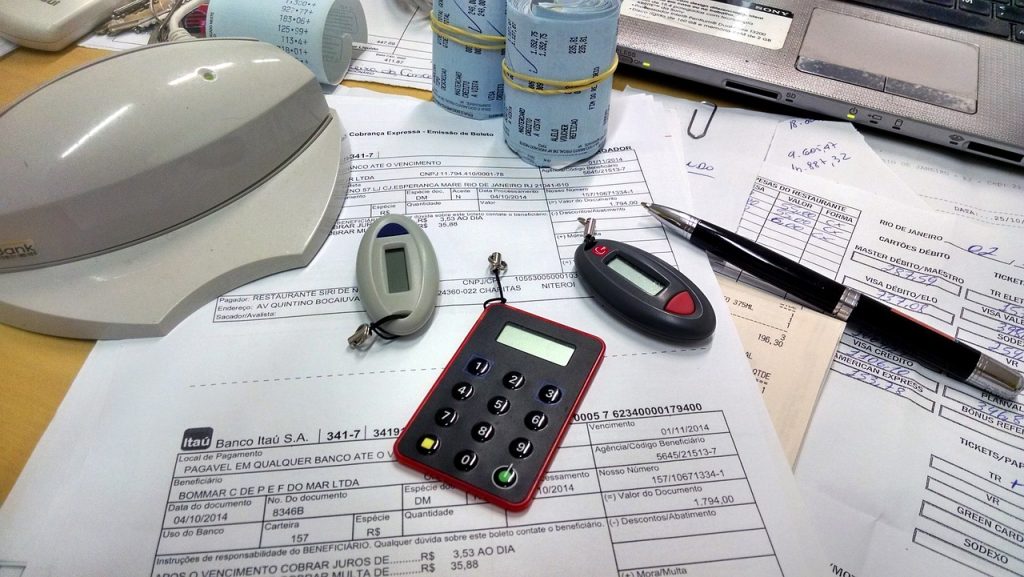
Business Disaster Recovery: How to Create a Business Disaster Recovery Plan
Disasters can come knocking on your business’s front door at any point in time. It’s not enough to be focused on today’s performance – your company needs to be prepared for the curveballs that life can throw tomorrow, next week, or even next year.
While business emergency loans are definitely going to help in the event that a catastrophe hits, they won’t be able to cover all of the immediate damage caused by the disaster as well as the secondary losses it may cause (if your business isn’t operating, clients may seek the service you provide elsewhere, for example). That’s where a business disaster recovery plan comes in handy.
Feeling uncertain about your ability to respond effectively in the wake of a disaster? Here, we provide all there is to know about business disaster recovery plans, how to design them, along with which forms of emergency business funding are available.
What is a business disaster recovery plan?
A business disaster recovery plan, as the name suggests, is a prearranged set of tactical steps that a company creates in order to respond effectively in the event of a catastrophe. A business disaster recovery plan may differ depending on the type of business that you own as well as the sort of disaster that occurs. If you own a winery in California, the focus of your disaster recovery plan would likely be placed on the threats posed by the massive wildfires that have recently swept across the state. On the other hand, for businesses on the Gulf Coast (Florida, Louisiana, etc.), the odds are their recovery plans would mostly concern the possibility of major flooding.
Ultimately, the primary concern in any catastrophic event is, of course, the safety and well-being of the people affected. So once you’re certain that your employees are out of harm’s way, a business disaster recovery plan should be the next thing that you put into action.
Important note: Every company should have several recovery plans that detail what should be done in the event of a wide variety of disasters and for each department in the company. That way, whether it’s a flood, fire, earthquake, or any other type of emergency, every part of your business will be prepared to take on any set of events without hesitation.
Which businesses need a disaster recovery plan?
The fact of the matter is that every business needs a disaster recovery plan because every business is at risk of being the unfortunate victim of disastrous circumstances. We’ve all heard the old saying, “we make plans, and then life happens”. While that might make it sound like a useless effort to make plans at all, it’s actually even more of a reason to prepare your business for unpredictable setbacks.
When things go smoothly with a business for so long it can often result in a false sense of security. Don’t be fooled! We all like to hope for the best, but any responsible business owner will do the wise thing and make sure the company is always prepared for the worst. One of the smart steps taken to ease the strain of catastrophic events is to outline a business disaster recovery plan.
How to create a business disaster recovery plan
Creating a business disaster recovery plan from scratch can be tough, especially if you haven’t had experience with such a task before. Take a look over the list below to gain insight on how to properly design a DRP.
What your business disaster recovery plan needs:
- Procedures for all possible disasters
- Comprehensive insurance coverage
- List of roles and employees
- Communication strategy
- Inventory of equipment
- Stockpile of essentials
- Secondary base of operations
- Off-site backup of documents/data
More comprehensive descriptions of those pointers follow below.
1. Procedures for all possible disasters
There is an infinite amount of different disasters that can result in the need for emergency business funding, but that doesn’t necessarily mean you need to have a unique plan for each one. You’ll want to shape your response plan(s) in such a way that you will be prepared to face any catastrophe, such as:
- Floods (natural or burst pipes)
- Earthquakes
- Fires (natural or human-caused)
- Accidents, such as a tree falling on your building
- Hurricanes, blizzards, tornados
- Hazardous material spills
- Cyber attacks
- Acts of violence/terrorism
- Virus outbreaks like the recent coronavirus
Top tip: Of course, depending on where you are located geographically, certain circumstances are more or less likely to happen. Prioritize your business disaster recovery plan(s) accordingly so that regardless of what may come your way, your business will have the resources needed to minimize the damage and keep the company operating.
2. Comprehensive insurance coverage
The other seven steps are important, but when it comes to business disaster recovery nothing really measures up to the significance of having the right insurance coverage. But it’s important to remember that, since different geographic locations will pose different risks, a business disaster recovery plan should reflect the likelihood of any certain catastrophe taking place.
For example, if a business is located in the Rocky Mountains, it wouldn’t make much sense to invest in tsunami or volcano coverage. On the other hand, that same business would certainly want to be prepared for extreme blizzards that can do severe damage to their property.
Top tip: Make sure that the insurance plan you choose provides coverage for direct and indirect costs related to the disaster. In other words, your insurance should cover the immediate physical damage done to your business property as well as the other forms of damage to your business (for example, the operation being disrupted).
3. List of roles and employees
This step is fairly self-explanatory. As with the other pointers in this list, learning to prioritize is key to having a business disaster recovery go smoothly and successfully. With respect to filling role positions, business owners should have a clear idea of which positions need to be back up-and-running more than others. The business disaster recovery plan should then be designed in such a way that those high-priority jobs are operating again as soon as possible.
Top tip: Create a business disaster recovery ‘committee’ made up of senior members and management from major departments and teams. That way each branch of your business knows its role and how to respond in case of emergency.
4. Communication strategy
Communication is crucial! Even if your business disaster recovery plan is tip-top, a lack of communication can mean failure to weather the storm. Be sure to regularly request updated contact information from employees, clients, and suppliers so that nobody is left out of the loop.
Top tip: Make use of all forms of communication, from paper notices to phone calls to emails and social media posts. Keep those avenues of communication up-to-date as the business disaster recovery plan progresses. Employees, customers, and suppliers will all appreciate the effort you make to keep them informed.

5. Inventory of equipment
Whether you own a restaurant, run a construction company, or operate a dental clinic – there will be a number of pieces of equipment that will be vital to the business disaster recovery. Be sure to keep an inventory of that equipment, including the exact models, serial numbers, date of purchase, the price at the time of purchase, and so on, that way no time will be wasted in replacing those pieces and getting the business back up to speed.
Top tip: If you’re not entirely sure what equipment each employee needs in order to do his/her job, have them include that information along with their contact information. Again, the more details you have to work with, the easier the business disaster recovery will go in the wake of a catastrophic event.
6. Stockpile of essentials
In many instances, the disaster that hits your business will also impact other businesses nearby. So, even if you have a strong business disaster recovery plan and are able to continue operating quickly, there will often be a length of time before other businesses (including your suppliers) are able to get their gears turning again. For that reason, it’s a wise choice to stock up on essential supplies in advance so that your recovery plans won’t be frustrated by the ineffectiveness of other businesses.
Top tip: To the best of your ability, it’s also recommended that you coordinate your business disaster recovery plan with your suppliers. By synchronizing the recovery plans, you can minimize the dependence on your stockpile and avoid the possibility of running out of supplies too quickly.
7. Secondary base of operations
Secure a location at which your employees can operate in the event of a catastrophe. Perhaps your business won’t be able to operate at full capacity, but something is certainly better than nothing. When clients go through the same disaster that your business has, and they still find themselves able to access your services (even just a portion of them), it sends a message loud and clear that you will always be there for them. And if it’s a disaster that only affects your business, that’s all the more reason to maintain some level of operationality so that patrons don’t grow too concerned or turn elsewhere for service.
Top tip: One way to join together two of the pointers in this list is to use your business’s secondary base of operations as a location to store your stockpile of essential supplies. That will also reduce the need to run around and get things organized in the immediate aftermath of a catastrophic event.
8. Off-site backup of documents/data
Your business should regularly backup all important documents and data, whether weekly, bi-weekly, or monthly (the more often the better). On top of that, it’s also crucial to safely store all of that material somewhere other than at the business. Just imagine having gotten everything squared away except for this step.
You can have all of your employees, all of their equipment, all of the supplies, and so on and so forth. But if you lack records of clients, suppliers, outstanding accounts, and all other bills and expenses, how well can your business really operate? Perhaps some work can get done, but on the whole, the absence of crucial documents and data can translate into paralysis for your business.
Top tip: The more places you store important documents and data, the better off you’ll be in the event of a widespread disaster. Consider duplicating those files to be kept in several locations – it may end up being the ace up your sleeve!
Disaster recovery vs business continuity – What’s the difference?
Business continuity and disaster recovery are often times used interchangeably, but the fact is that these two terms have clear differences. It is important that every business owner learn the differences between business continuity and disaster recovery so that they can keep their company properly prepared for unforeseeable events.
When comparing disaster recovery vs business continuity, it may be helpful to use an analogy to grasp the differences more firmly. Think of a football match, and how each time the two teams line up they have a specific ‘play’ in mind. But while the coach is calling out the different ‘plays’ every couple of minutes, there is also an overall ‘game plan’ that provides a more general sense of what needs to be done to be victorious against the other team.
Disaster recovery
A business disaster recovery plan (DRP) is a specific ‘play’ that fits into the overall ‘game plan’ that is the business continuity plan (BCP). For each separate group or department within a company, there should be a tailored disaster recovery plan that will help them recover quickly and effectively.
For example, the business disaster recovery plan that is designed for information technology (IT) will naturally differ from the DRP that’s designed for a business’s sales department. Ultimately a business should have several disaster recovery plans that outline the detailed procedure of how each sector of the company will get itself up and running again.
Business continuity
Compared to a disaster recovery plan, a business continuity plan is a broader list of procedures that are designed to make sure that a business’s key operations continue to run throughout a disaster (as well as after it passes). This more general set of steps can be viewed as the overall ‘game plan’, while the varying business disaster recovery plans for each department are more like the individual ‘plays’ that are implemented under specific circumstances.
By creating a general strategy that outlines which systems need to be rebooted first, and how to go about it, a business enables itself to bounce back from a disaster having incurred less damage and fewer losses.

Emergency business funding & disaster recovery loans
Emergency business funding encompasses a variety of types of financing, and some may be a better fit for your disaster loan needs depending on the given situation. Fortunately, applying for disaster loans through Become is fast, easy, and opens up access to a network of dozens of the top loan providers across the USA and Australia. That means much higher odds of matching with the right lender for your business needs.
To get a clearer idea of which sort of funding will best meet your business emergency loan needs, take a close look at the different solutions below.
Types of emergency business funding:
1. SBA disaster loans
The U.S. Small Business Administration doesn’t technically provide funding to small businesses; instead, it guarantees up to 85% of the SBA disaster loan amount so that the risk is lower for lenders and the chances of approval are higher for borrowers. SBA disaster loans are immensely helpful for companies in need of emergency business funding.
2. Unsecured business emergency loans
For businesses that don’t have (or don’t want to use) valuable assets as collateral for a disaster loan, unsecured business emergency loans are an ideal solution since they don’t require applicants to use assets as security. It is worth noting that an unsecured business loan for emergency situations will sometimes require a personal guarantee signed by the business owner that states his/her responsibility to repay the borrowed amount.
3. Equipment financing
Disasters often result in lost or damaged equipment, which naturally makes equipment financing one of the most useful types of emergency business funding. Restaurants need working refrigerators, dental practices require functioning air compressors, and so on. Regardless of what industry your business is in, having operable equipment can mean the difference between success and failure.
Of course, the type of business will affect the kind of industry loans a business needs, as well as the specific circumstances that business finds itself in. Be sure to weigh your options carefully in order to choose the right funding solution for your business.
4. Business line of credit
A business line of credit is one of the most flexible types of emergency business funding. Similarly to how credit cards work, with a business line of credit, you can borrow money on an as-needed basis and you can use the funds however you deem fit.
In other words, your company will have access to a set amount of funds (credit line), and you only need to pay back as much as you borrow at any given time. This differs from lump-sum business loans, where you receive the full amount of funds all at once and you pay interest on all of it regardless of whether you actually use it or not. It’s always wise to have a business line of credit open so that you have a reliable fall-back plan if a catastrophic event were to hit your business.
In a nutshell
Life is full of surprises, and not all of them are so pleasant! For small business owners, being unprepared when disasters strike can mean lots of scrambling around. In catastrophic circumstances, having quick and effective methods of responding can mean the difference between survival and demise. Be sure to use the information provided in this article to get your business ready to face any and all types of disasters.
Feel free to share this article with your colleagues and, of course, on social media as well. We hope you find this information useful!




